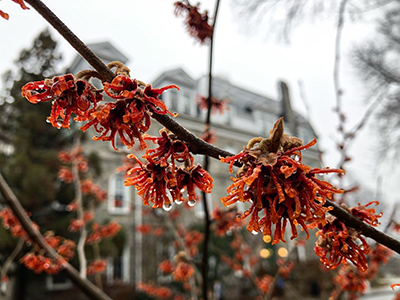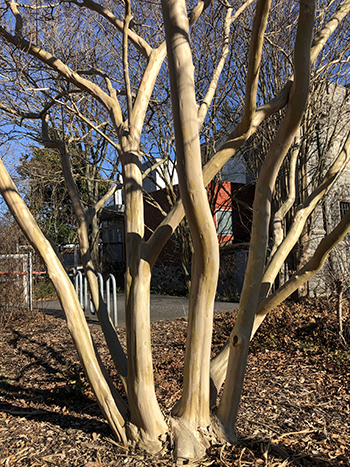
Plants of the Week: Feb. 14

Hamamelis vernalis ‘Lansing’ is in full bloom! The vernal witchhazel is reliably one of the first Hamamelis to bloom in the new year. While the flowers are among the smallest of the Hamamelis species, they are especially fragrant. Dirr praises H. vernalis as a “great plant for massing, naturalizing, or grouping, in quite moist or dry soils. A tough plant with an alley-cat tenacity.” Planted in Parrish West Circle, the rich orange blooms on H. vernalis ‘Lansing’ are not to be missed. Photo credit: J. Coceano

Lagerstroemia ‘Tuskegee’ (crapemyrtle) is one of several hybrids selected and released by the U.S. National Arboretum. Highly adaptable, ‘Tuskegee’ is one of the few cultivars suitable for the heat of southern Florida while also being able to withstand temperatures as low as -23° C with no damage. Richly saturated dark pink to near red flowers appear in summer. The colorful floral display lasts 100 days on average. The trunk is equally stunning and noted for its smoothness and warm tan color. A specimen in the Summer Bloom Border is a visitor favorite. Photo credit: J. Coceano

Magnolia virginiana var. australis ‘Perry Paige’ [Sweet Thing®] is a dwarf selection of sweetbay magnolia first discovered in a block of seedlings by George Dodson at Sleepy Hollow Nursery. The particular plant that would eventually become a registered cultivar stood out for its dense and compact appearance coupled with its short stature. The cultivar makes an excellent specimen plant for those with limited space or as a substitute for more traditional hedge and foundation plants. Highly scented flowers are produced from early to late summer. The evergreen leaves hold up well throughout the winter months. Sweet Thing® has a hardiness range from zones 5 to 9. A 2013 accession is planted on the corner of Worth Health Center in the Magnolia Collection. Photo credit: J. Coceano





No Comments